The Hero's Way Read online
Tim Parks
The Hero’s Way
Walking with Garibaldi from Rome to Ravenna
For Eleonora, garibaldina
CONTENTS
Author’s Note
Map
A Word of Advice
PART ONE: Flight
PART TWO: Hope
PART THREE: Survival
Endgame
AUTHOR’S NOTE
One version of my life story might be that I met an Italian woman in 1978, married, moved to Italy and have lived here ever since. Without really choosing the place or it choosing me. But a happy curiosity of my ‘Italian destiny’ was the way it was foreshadowed in adolescence. Faced with the need to choose a special subject for my history A level, I chose the Risorgimento, the process by which the various Italian statelets freed themselves from foreign domination and became, in 1861, a single unified nation. Under the guidance of a passionate teacher, we read a book of original documents from the time and learned of the four great artificers of modern Italy: the revolutionary republican Giuseppe Mazzini, who spent his entire life fomenting armed insurrections that invariably failed; the Machiavellian prime minister of Piedmont Camillo Cavour, who ably exploited rivalries between France and Austria to further Piedmontese expansionism, making his state the core of the emerging nation; the blundering but strangely effective Vittorio Emanuele II, King of Piedmont, who played a double game between his prime minister on the one side and the revolutionary patriots on the other; and finally Giuseppe Garibaldi, the extraordinary guerrilla warrior with a South American past who in 1860 astonished the world by taking a thousand rebels to the west coast of Sicily, capturing the island from a 20,000-strong Bourbon army, crossing to Calabria and driving north through Naples, gathering volunteers as he went, Rome bound, until he met the Piedmontese army racing south to stop him and handed all territorial gains to Vittorio Emanuele, creating the unified Italian state by fait accompli.
A year after those studies, in 1974, I took advantage of the newly introduced Interrail Pass to visit Italy for the first time and discovered in the process that I already knew a good percentage of the country’s street names. Viale Cavour, Via Mazzini, Corso Vittorio Emanuele, Piazza Garibaldi – the four patriots are everywhere, their exploits celebrated in countless monuments, statues and plaques. By far the most attractive, both on the page and in stone, is Garibaldi: the deep-set eyes and bearded severity, the manly bearing beneath soldier’s cap and gaucho’s poncho, still transmit a powerful charisma; the words roma o morte! inscribed beside the many balconies around the country where he pronounced his famous rallying cry still thrill the heart. Shame that the history books have him down as an ingenuous fellow, a tool in the hands of others, a lucky simpleton.
I began to doubt this description a decade later when asked to review biographies of the hero. Manipulated he may often have been, but simpleton he was not. He was canny, highly organized, creative. And if there was luck, which he acknowledged, it was luck he worked for. The injustice is interesting. Passionately local, ever divided into clans, factions, lobbies and corporations, Italians are not a people inclined to unity. Suspicion, conspiracy theories, cynicism abound. Infighting is the norm, defeatism is rife. Garibaldi, most unusually, set these negative qualities aside, and with them his republican ideals, to focus on a single goal: unity at any cost. He believed it could be achieved in his lifetime and, exhorting others to forget their differences and fight, even die, together, he achieved it. He thus becomes a challenge, even an accusation, for all those who like to feel that courage is futile and progress impossible. To make matters worse, he lived to tell the tale. Despite collecting a dozen bullet wounds over forty years of fighting, the hero died in his bed in 1882 at the age of seventy-four.
All the same I did not fall in love with Garibaldi till I came across A Diary of Events in Rome in 1849 by Gustav Hoffstetter. Hoffstetter was a Bavarian officer who volunteered to fight for the short-lived Roman Republic which replaced papal rule in February 1849 and fell to French troops after a two-month siege in early July. Garibaldi was one of the commanders in that battle, a battle he knew he could not win. However, it was not so much the doomed siege that moved me as the description of the hero’s extraordinary retreat from Rome through central Italy together with his Brazilian wife, Anita, and 4000 volunteers. He had sworn never to surrender to foreign soldiers on Italian soil. Arguably, it was what the hero learned and the example he set on that calamitous 400-mile march that would make his future triumph possible. Hoffstetter was his aide-de-camp. Rarely, reading his account, have I wished so much to live in a different time and another man’s shoes. Or boots.
In 2019, 170 years after those events in Rome, I bought a pair of trekking shoes, persuaded my partner Eleonora to do the same and set off, in July, to retrace their steps.
A WORD OF ADVICE
Aside from this principal map, it would be wonderful to pack this book with sketches and routes and plans. It’s a tale of movement through a magnificent and varied landscape. A story of flight and pursuit. Cat and mouse. Or rather cats and mice. There are times when you need a sense of where everyone is in relation to this or that geographical feature, the mountains, the rivers, the sea. But maps are expensive and one would need so many. And these days most of us have the most wonderful and versatile maps right in our pockets. So, whenever you feel a little lost, as we often felt very lost along this trip, I suggest you pull out your phone. Each chapter, each day, opens with the names of the two, three or four towns or villages we passed through. Tap the names into Google Maps. Use the satellite view, the terrain view, the street view. I will do my best with the words, but they may be more alive and exciting if you know where we are.
PART ONE
Flight
DAY 1
2 July 1849 – 25 July 2019
Rome, Tivoli – 22 miles
He had forty-eight hours to prepare for the journey. We’ve been thinking about it for a year and more. Four thousand infantry had to be organized. Eight hundred cavalry. Mules, carts, munitions, food, medical services. A cannon. He was disappointed, having hoped for 10,000. We always knew it would be just us two, with our backpacks.
Still, we are leaving from the same place. Piazza San Giovanni in Laterano, Rome. The white facade of the basilica looms in the dark, its huge stone apostles silhouetted against the sky. He set out at sunset and had his men march through the night. No smoking was allowed. Orders were whispered down the lines. The enemy must not get wind. Our main enemies, we reckon, at least on this first stretch of the journey, will be traffic and heat. The forecast is for thirty-seven degrees, so the cool of the night is tempting. But to walk along fast roads in the dark would be suicidal. So we leave at 4.30 a.m., hoping to cover the twenty-mile hike before the sun is high.
The square is dead at this hour; San Giovanni isn’t lit up. Our selfie on the steps shows only shadowy masonry behind wired-up smiles. No one has come to see us off. Garibaldi and his men were cheered on their way by a big crowd. The American journalist Margaret Fuller was there. ‘Never have I seen a sight so beautiful,’ she reported, ‘so romantic and sad . . . I saw the wounded . . . laden upon their baggage carts, I saw many youths, born to rich inheritance, carrying in a handkerchief all their worldly goods.’
Garibaldi, Fuller says, was distinguished by a white tunic. Other observers have him wearing the red shirt he made an emblem of the struggle for Italian nationhood. And a poncho, relic of his time in South America. Anita, six months pregnant with their fifth child, followed him on horseback at the head of the column. Seeming entirely ‘a hero of the Middle Ages’ Fuller wrote, Garibaldi ‘went upon the parapet and looked upon the road with a spyglass, and, no obstruction being in sight, he turned his face for a moment back
upon Rome, then led the way through the gate.’
That was 2 July 1849. One hundred and seventy years later Eleonora and I followed him under the same sixteenth-century arch. Unlike Garibaldi and his men, we knew we had a month’s walking ahead of us. Naively, we were thinking of it as a holiday.
A hundred and seventy years and twenty-three days to be precise. We’re leaving Rome on 25 July 2019. It’s irritating; we would have liked to leave the same day, but I had to be present at a graduation exam in Milan. There was some cause for celebration, though; that had been my last professorial duty. I had resigned my job after twenty years and more. Italian friends sought in every way to dissuade me from doing this. You’re taking a big risk, they told me, throwing away a reliable income. On no account must I end up alone and vulnerable, outside organized society.
Garibaldini was the word Italians came to use for the men who volunteered to fight with Garibaldi. It was understood that they were of a type. Soon enough the name escaped its specific historical context and took on the more general sense of someone bold and idealistic, someone who takes risks, perhaps ingenuous, even rash. So even today you can say, ‘She’s a real garibaldina! God knows what will become of her.’
Do Eleonora and I want to think of ourselves as garibaldini? Is that why we’re here in the empty Roman square at this godforsaken hour with twelve pounds of gear on our backs? Eleonora gave up her steady job a couple of years ago. She wouldn’t accept a life of dull constriction. Or not without a fight. The problem with this approach, of course, is that a risk really is a risk. And a fight a fight. You can end up badly. ‘The flower of Italian youth were marshalling in that solemn place,’ Fuller wrote of the garibaldini in Piazza San Giovanni that evening. ‘They had been driven from every other spot where they had offered their hearts as bulwarks of Italian Independence; in this last stronghold they had sacrificed hecatombs of their best and bravest in that cause; they must now go or remain prisoners and slaves.’
So the men we’re following were traumatized, in denial perhaps; they had lost a war but were refusing to surrender. Others who might have joined them that fateful evening had been locked in their barracks by commanders who thought the project folly. Others simply chose not to. The Lombard Bersaglieri, the most disciplined of Rome’s defenders, had promised to be there; only a handful turned up.
Garibaldi had called his rendezvous for six o’clock; now he waited, trusting more would come. But with every minute the risks were growing. At eight o’clock, exactly as he decided enough was enough, a group of Bersaglieri arrived to announce that, after much consideration, no, they weren’t coming. We’re only in the square to say goodbye to our friends, they said.
Were these renouncers wiser than the garibaldini? Margaret Fuller doesn’t mention them. She doesn’t say that the march began with a sense of disappointment and betrayal. It didn’t fit with the romantic picture she was painting for the New York Tribune.
Selfie taken, we set off under lamplight through deserted streets, past neglected monuments and shuttered cafés, across dry thirsty grass where destitute men and women turn fitfully on stone benches. The air has that brooding staleness of summer nights in times of drought. To our right the recently renovated Historical Museum of the Sardinian Grenadiers is flying the Italian tricolour, something you would have been imprisoned for under papal rule. Following a long bend, we arrive at the Aurelian Wall, a mass of Roman brickwork dividing a shabby waste of cracked tarmac and faded road markings.
What a tangle of ancient and modern Rome is! In the space of a couple of minutes we pass beneath ancient imperial arches then under a grim concrete viaduct carrying the high-speed rails that brought us into the city from Milan a couple of days ago. Iron fencing, urine smells and sodium lamplight. Stazione Termini is to our left. Needless to say it wasn’t here in 1849; Pope Gregory XVI had dubbed railways the work of the devil; the Papal States were among the most backward territories in Europe.
An early bus has RISORGIMENTO glowing up front. Meaning Piazza Risorgimento, not the historical movement. Does any Italian heart warm to the word these days? Three passengers getting off are all immigrants of different ethnicities, the people the minister of internal affairs, right-winger Matteo Salvini, loves to blame for Italy’s decline. Before the battle for Rome began in April 1849, Garibaldi caused a stir when he rode into the city with a black man at his side. Uruguayan child of African slaves, Andrea Aguyar would be much admired for his courage in battle, in particular his ability to pull enemies off their horses with his lasso. But he did not join Garibaldi in the piazza on 2 July; he had been killed by cannon fire in Trastevere two days before.
OMIO DANTE GARIBALDI, announces a poster rather mysteriously as we swing into the Via Prenestina. We’ve quickened our pace now; we need to move fast while it’s cool. But what does Dante have to do with Garibaldi? ‘For sure it takes courage to unite Italy,’ runs the poster’s text beneath images of trains and planes, ‘but now you can finally buy all your rail, bus and air tickets in the same place. OMIO.’ They give a website address. I’m still not sure how this justifies bringing in Dante, but we don’t have time to stop and reflect. The sun is rising and through the cluttered, post-industrial cityscape of Rome’s eastern suburbs we get a first glimpse of the distant hills in low silhouette, tinged with red. Garibaldi knew he had to be on those slopes by dawn.
But how did this all begin? To understand where we’ll be heading in the next few weeks, we need to know where the people we are following were coming from.
The city of Rome and the territory then known as the Papal States, stretching north to Bologna and Ferrara, east to Ancona on the Adriatic coast and south to Terracina, declared itself a republic on 9 February 1849. As such it was the last of the ephemeral revolutionary states that emerged across Europe from the liberal uprisings of 1848. The hope was to make Rome the capital of a united Italy, since at the time the country was seriously fragmented and largely governed by foreign or despotic powers.
The road to this republican declaration was complicated. In 1846 the newly elected Pope Pius IX had looked favourably on the movement for national unity, even encouraging patriots to think of him as a future Italian monarch and granting his subjects a constitution in March 1848. This allowed for an elected chamber of deputies and for government ministers who would not be priests but competent laymen, a move that infuriated Rome’s bishops and cardinals. When Pius further allowed a hybrid army of papal troops and patriotic volunteers to go north to support the Piedmontese in their attempt to liberate Lombardy and the Veneto from the Austrians, there was a surge of excitement. Forty thousand men volunteered. Viva Pio Nono! Viva l’Italia! Viva l’unione! Libertà! was their battle cry.
But a little freedom whets the appetite for more. Frightened by the clamour for further reform, Pius grew nervous, then openly hostile. He withdrew support for the war against Austria and tried to put a lid on the new chamber of deputies, appointing a shrewdly conservative ex-diplomat, Pellegrino Rossi, as his prime minister. Unpopular with reactionaries and reformers alike, Rossi was assassinated in November 1848, and Pius fled the city for the protection of the Kingdom of Naples.
Nobody knew what to do. Having set up his court in exile just south of the border in the coastal town of Gaeta, the Pope declared the government of Rome illegal but did nothing to replace it. The chamber of deputies sent envoys begging him to return and resume his papacy. They promised to be loyal; but he refused and after a month-long stand-off the chamber called for the election of a constituent assembly to decide the future shape of the state’s institutions. On 9 February the new assembly declared the end of the Pope’s temporal rule and the establishment of a republic. In response Pius called on four Catholic powers – Austria, France, Spain and Naples – to recover his realm by force.
Given that only the previous June the Austrians had had to fight a papal army in alliance with Piedmont, this was quite a turnaround. But it suited Austria fine. They had already defeated the Piedmontes
e and retaken Lombardy and all of the Veneto but for Venice. These territories were part of their empire. On 18 April, only four days after the Pope’s appeal, Austrian imperial troops crossed the border from the Veneto and took the papal town of Ferrara. They then proceeded to lay siege first to Bologna, then Ancona, bombarding the two towns into submission over many days with considerable loss of life. Meantime, in early March, Giuseppe Mazzini, the great ideologue of Italian unity and republicanism, left his place of exile in London, came to Rome and at once told the constituent assembly, ‘After the Rome of the Emperors, after the Rome of the Popes, will come the Rome of the People . . . We may have to wage a holy war against the only enemy that threatens us, Austria. But we will fight it, and we will win.’
Mazzini was wrong on various counts. On 24 April a French army disembarked at Civitavecchia, Rome’s port, fifty miles to the north-west of the city. On 29 April a Spanish army landed sixty miles to the south. The Neapolitan army was also mobilizing. So much for one enemy. In response, the republic formed an emergency triumvirate, headed by Mazzini. Thousands of patriots had been gathering to defend the city. They needed to be organized, and what military protection they could offer would have to be integrated with the new state’s diplomacy. All this would be the task of Mazzini, who had no military or diplomatic experience.
By far the most prominent of the new arrivals was Giuseppe Garibaldi. Born in 1807, a seaman by trade, sentenced to death in 1834 by the Piedmontese authorities for insurrection, Garibaldi had spent many years in exile in Brazil and Uruguay, where he established a reputation as a courageous and effective soldier for liberal causes. He had dedicated his life, he said, to freeing people from oppression. But the cause he cared for most was Italy. Excited by news of revolutions in Europe and reassured by a Piedmontese amnesty for those previously convicted of political crimes, Garibaldi returned to Italy with sixty of his comrades in June 1848. He at once offered his assistance to the Piedmontese king, who was fighting the Austrians in Lombardy, but was turned down. He then fought briefly for the independent Republic of Milan, which soon collapsed.

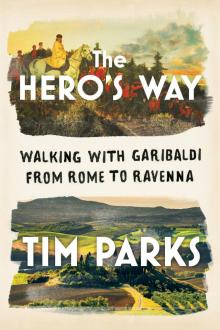 The Hero's Way
The Hero's Way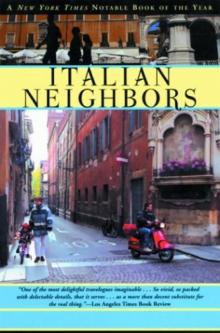 Italian Neighbors
Italian Neighbors Goodness
Goodness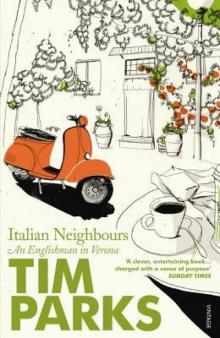 Italian Neighbours_An Englishman in Verona
Italian Neighbours_An Englishman in Verona Italian Neighbours
Italian Neighbours Juggling the Stars
Juggling the Stars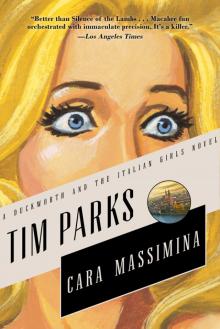 Cara Massimina
Cara Massimina Cleaver
Cleaver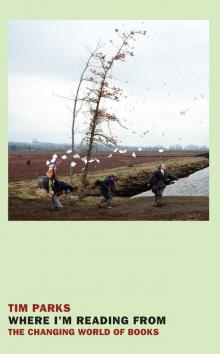 Where I'm Reading From
Where I'm Reading From Dreams of Rivers and Seas
Dreams of Rivers and Seas The Fighter
The Fighter In Extremis
In Extremis Painting Death
Painting Death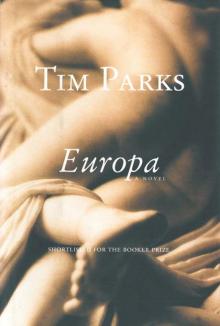 Europa
Europa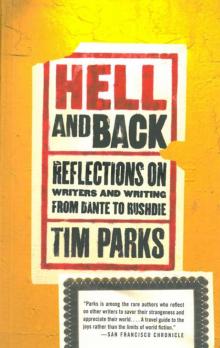 Hell and Back
Hell and Back Judge Savage
Judge Savage Thomas and Mary
Thomas and Mary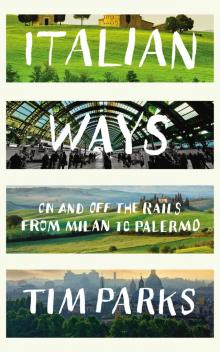 Italian Ways
Italian Ways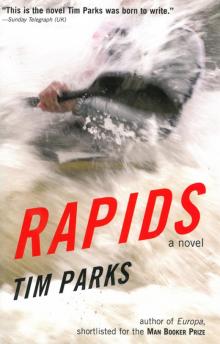 Rapids
Rapids Mimi's Ghost
Mimi's Ghost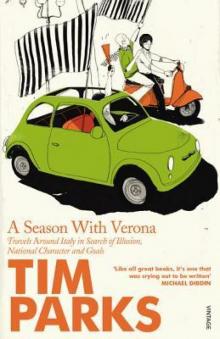 A Season With Verona
A Season With Verona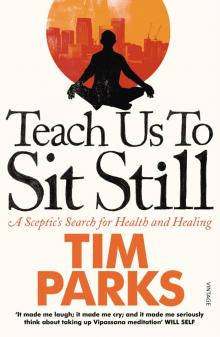 Teach Us to Sit Still
Teach Us to Sit Still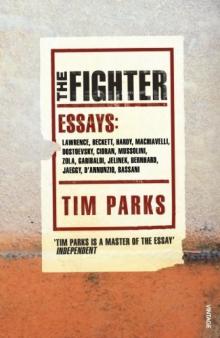 The Fighter_Literary Essays
The Fighter_Literary Essays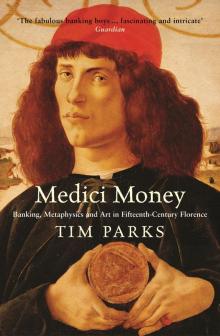 Medici Money
Medici Money